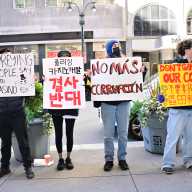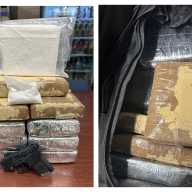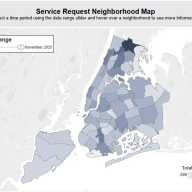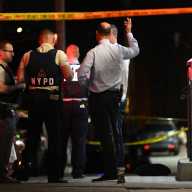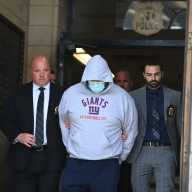Police Officer Tom Colucci, Graffiti Officer at the 109th Precinct answered The Queens Courier’s questions during an interview on Wednesday, January 24.
QC: How long have you been Graffiti Officer?
TC: I was one of the 109th’s youth officers for the last five years. I became familiar with graffiti and began keeping track and identifying numbers and tags. At the very least I wanted to know who is doing them, and when possible making arrests.
The job used to be reactive, but since January when the borough started this pilot program and every precinct in northern Queens has appointed one graffiti officer, it has become proactive.
QC: What is the best way to catch a graffiti vandal?
TC: Now that the job is official, we are investigating the graffiti itself. Usually the best way is to catch a vandal is in the act, or find a witness who can identity them.
We need the public’s help. We are urging people to call 9-1-1 if they see graffiti in progress and to give as accurate a description of the perpetrator as possible, including what they are wearing. That way if they have gone - and we have seen videos of them in action, they work fast - the officer on patrol might be able to identify them away from the scene.
QC: Once you get a call what happens?
TC: 9-1-1 is for graffiti in progress. If someone wakes up and finds graffiti on their wall, they will call 3-1-1. I will go around and take photos. I ask myself - Do I know whose tag it is?
Even if I know, I have to tie the person to the tag. First, I must recognize, then investigate and with the help of a witness make an arrest.
This is a team effort. It involves all the officers on patrol, the community and all the other graffiti officers in Queens.
QC: How big is the problem?
TC: It is widespread. In the 109th, we come across numerous tags every day.
QC: What is a typical day for you?
TC: Usually I come in and run the previous night’s 9-1-1 and 3-1-1 [calls] looking for complaints. Then I go and talk to the complainant and take pictures.
I talk to people from the community, building superintendents, schools and kids. I get tips and it can lead to arrests.
QC: Who is a typical graffitist?
TC: They’re called vandals, not artists - it costs a lot of money to remove graffiti.
A lot of people think it’s a victimless crime. Tell that to the person who has to spend money they earn for their family to remove it.
Graffiti is one of those quality of life crimes that we want to aggressively pursue to make the neighborhood better. We think it leads to serious crime.
Vandals are so common in this area we think they’re aware of more serious crimes taking place even if not they’re not committing them.
QC: How long does it take from the time graffiti is reported until it is cleaned up?
TC: That depends on where it is. We have community groups to clean up for public spaces. With private property, it depends on the person involved and how soon they can get to it.
When people paint over graffiti, the vandal gets frustrated. They want their tag seen, so they may go elsewhere if it’s cleaned up quickly each time.
The Mayor’s office has a City Graffiti Removal Program for commercial properties so sometimes they can help.
You have to sign a waiver which allows the Mayor’s office to initiate a clean up. 3-1-1 doesn’t always know about it, but the precinct does.
QC: How many graffiti vandals have you caught in the act?
TC: Me? Zero so far. Graffiti usually takes place at night when everyone is asleep. A group of officers in an unmarked car, two from this precinct, arrested five vandals in the act at the corner of Kissena Blvd. and 60th Avenue recently.
QC: What can businesses and individuals do to combat graffiti?
TC: Clean it up or paint over it ASAP. Notify the precinct by 3-1-1 if it’s already done or 9-1-1 if in progress - give as accurate a description as possible including what they are wearing.










